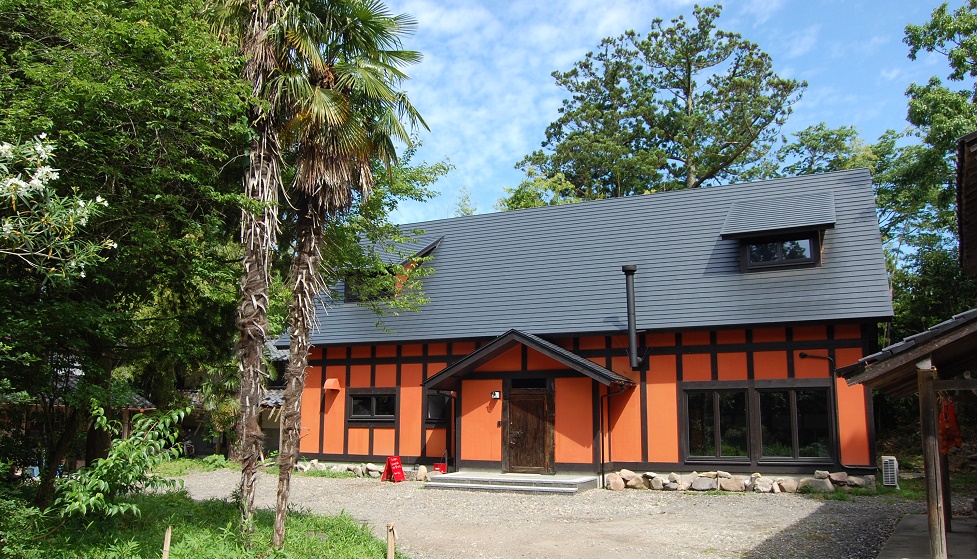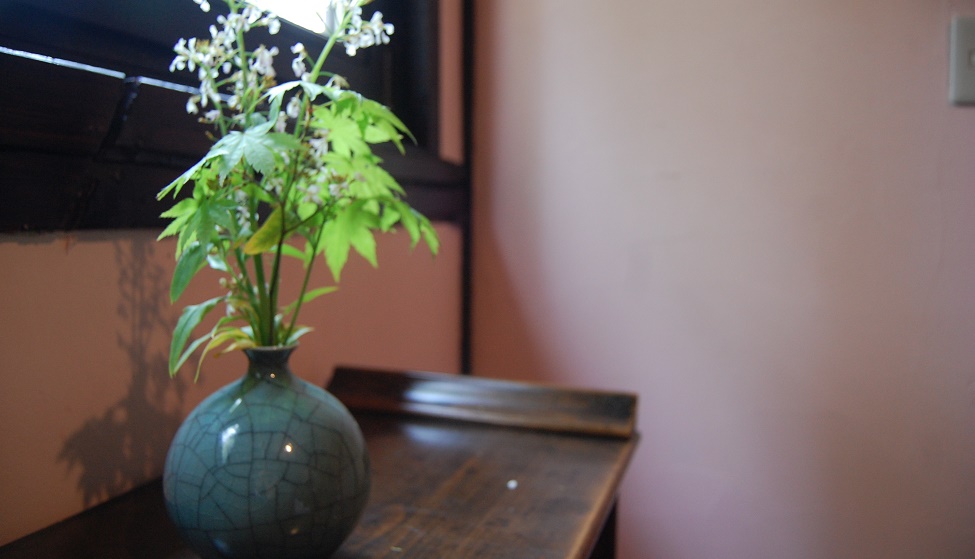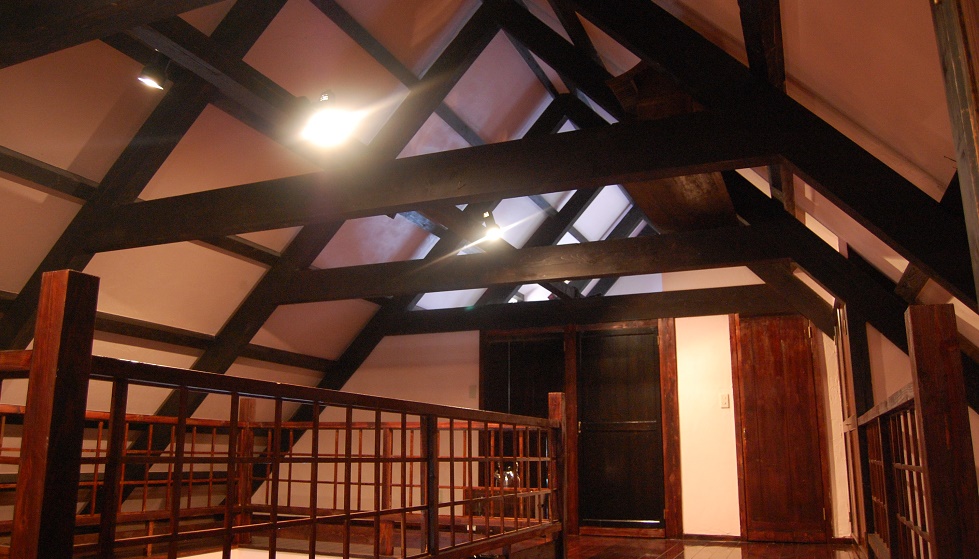- YOSABEI
YOSABEI
Facility Basic Information
- Address
- 549 Sansegawa, Sado, Niigata 952-1204
- TEL
- 0259-67-7284
- Payment Methods
- Credit cards not accepted
- Assistance in Foreign Languages
-
OK
English
- Internet
- Not Available
- General Accessibility
- Not Available
- Satellite TV
- Not Available
- Pets
- No
- Transport Access
- Ryotsu Port Approx 10 minutes by car
- Nearest bus stop
- Yoshii (Honsen [Main Line]) Approx. 5 minutes on foot from bus stop
- Parking
- Cars:5
- Note
-
Recognized as a SADOMESHIRAN [a shop or restaurant dedicated to utilizing Sado-grown products]
- Price per night (Tax included)
-
Bed and Breakfast 7,500 yen~
- Check-in
- 16:00
- Check-out
- 10:00
- Capacity
-
6
- Number of rooms
-
Western-style room with bed:2
- Business Period
- 10:00~17:30
- Closed
- Holidays subject to change.
- Book Online
- OK
- Facilities and Service
-
Cafe, farms
- En-suite bathroom
- Available
- Amenities
-
Toothbrush, Shampoo, Bath towel, Face towel, Body soap
- Transfer Service
-
Not Available
- Opening Times
- 11:00 - 15:00 (last food orders: 14:30)
- Regular holiday
- Mondays, Thursdays, Fridays, Saturdays, Sundays
- Number of seats
-
14
- Reservation
-
Not required
Seasonal menu items are limited in quantity. Booking is available.
- Conditions
- Open for lunch, Available for private party rent-out
- Other attractions
- Children are welcome! We have special tables for them.
Nearby Spots
-
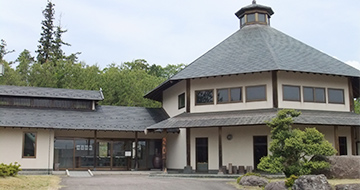 Craft Experiences Gift Shops
Craft Experiences Gift ShopsTsubakiya Togeikan Ceramic Art Hall
Approximately 1,000 works from 16 kilns on the island, including works by living national treasures from Sado, are on display and for sale. Works by Tamasaburo Bando, a Kabuki living national treasure with ties to Sado, are also on display. Sado camellia oil "SADO" is also produced and sold here. There is also a cafeteria space where visitors can enjoy locally produced food using ceramics by various ceramic artists.
-
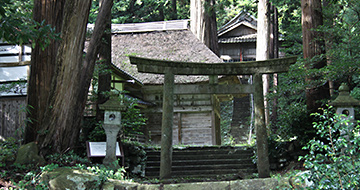 Shrines and Buddhist Temples Noh Stages
Shrines and Buddhist Temples Noh StagesAn'yoji Haguro Shrine
An'yoji's Haguro Shrine is said to be a shrine to where the god divided from Haguro Shrine, in Yamagata Prefecture, was invited and re-enshrined in 772. It is surrounded by gigantic cedar trees, and the main hall lies in harmony with the surrounding lush woods. Since olden days, in the small village of An'yoji, Noh has been offered in place of Ondeko (deity mask dance) in the annual, most important festival. The Noh stage (a Niigata Prefectural Tangible Cultural Asset), with its thatched, hipped-roof, is reputed to have been built in the late Edo Period (19th century). It used to stand across the front path from the main building of the shrine, but around 1909, it was relocated to, and enlarged, on the site where it now lies. The Noh stage at Haguro Shrine is the smallest in Sado, among the ones still in existence.
-
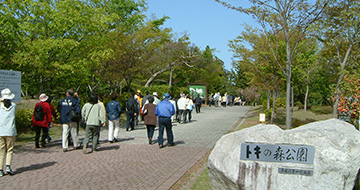 Toki (Japanese crested ibises)
Toki (Japanese crested ibises)Toki Forest Park
Toki Forest Park has toki-theamed facilities. Toki Materials Exhibition Hall showcases a collection of resources on the themes of preservation, breeding, and reintroduction into the wild. Toki Exchange Plaza is a popular spot where you can see toki up close. You can take a pleasant stroll around the park where you will ffind a monument to commemorate Japan's last wild toki named Kin. Don't miss out on the popular soft ice cream made with Sado-grown green edamame beans.
-
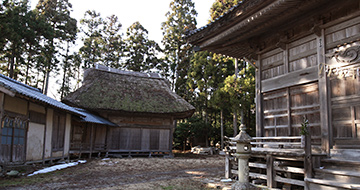 Shrines and Buddhist Temples Noh Stages
Shrines and Buddhist Temples Noh StagesNagae Atsukushihiko Shrine Noh Stage
The shrine's tutelary forest is located in the middle of a vast rice field to the south of Nagae River, and its lion-dog statues standing in the paddy are an impressive scenic feature. Established in the early 9th century, Nagae Atsukushihiko Shrine is one of Sado's nine shrines included in the Engishiki Register. After being moved, the current buildings are said to have been constructed in 1714. This shrine houses the tutelary deity for the Kamo Clan as well as a god of mines that used to be enshrined at Mt. Kinpoku. Within the shrine compound, a Noh stage with a quaint thatched roof stands with its left side facing the main hall. The stage is comprised of a main stage area and a rear stage area, and the passageway connects the stage and the room behind the curtain. Estimated to have been built between 1764–1780, this Noh stage is thought to be a valuable example of few pre-modern structures on Sado, and is designated a City Cultural Property.
Stores where you can eat and drink nearby
-
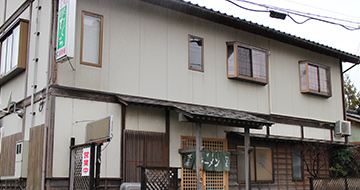 Casual Eatery Kappo Japanese Fine Cuisine at a counter Fish Dishes Sushi Set menus/Rice bowls/Kamameshi(hot pot rice) Chinese Ramen Noodles
Casual Eatery Kappo Japanese Fine Cuisine at a counter Fish Dishes Sushi Set menus/Rice bowls/Kamameshi(hot pot rice) Chinese Ramen NoodlesHiguchi Shokudo
The top recommendation at Higuchi Shokudo is their hand-crafted sushi with fresh seasonal toppings. The kitchen also delivers a variety of menus from à la carte and set menus to Chinese ramen noodles and donburi (a bowl of rice with toppings). Their selection of alcoholic beverage includes wine and cocktails, local Japanese sake, shochu (Japanese distilled spirits) and beer. You can enjoy your meal in a relaxing atmosphere in one of the three private dining rooms, which are popular for families and parties. It is situated on Route 350 and is easy to find.
-
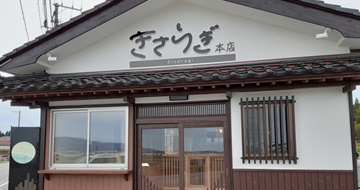 Casual Eatery Tea House/Coffee Shop Set menus/Rice bowls/Kamameshi(hot pot rice) Japanese-style Curry with Rice
Casual Eatery Tea House/Coffee Shop Set menus/Rice bowls/Kamameshi(hot pot rice) Japanese-style Curry with RiceKisaragi Honten
Kisaragi Honten offers menu items filled with love for Sado's bounty. Try the Sado Set prepared with Sado-produced ingredients, or the turban shellfish curry that was once a favorite of island fishermen.
-
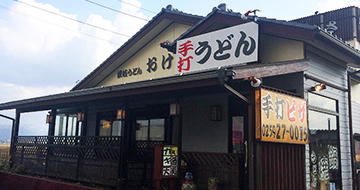 Casual Eatery Set menus/Rice bowls/Kamameshi(hot pot rice) Soba (buckwheat) and Udon Noodles
Casual Eatery Set menus/Rice bowls/Kamameshi(hot pot rice) Soba (buckwheat) and Udon NoodlesHand-kneaded Udon Noodles Okesa
Okesa is a restaurant specializing in Sanuki udon noodles hand-kneaded by the owner/chef, a native of Kagawa Prefecture, which is the birthplace of Sanuki udon noodles. Sanuki udon noodles feature a distinctively firm, chewy texture. The noodles are made from 100% Japan-grown wheat flour, and served in a special broth, which is made from grilled mackerel and bonito flakes, simmered for one hour every morning. Okesa offers set menus with udon noodles and rice dishes, and the menu changes according to the seasons. Okesa also provide three labels of Sado-produced Japanese sake. The menu has a range of tidbits, too, and the hand-kneaded pizza is gaining huge popularity.
